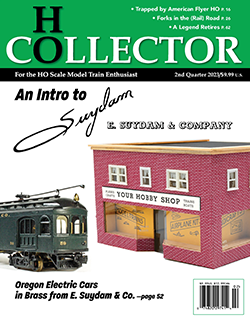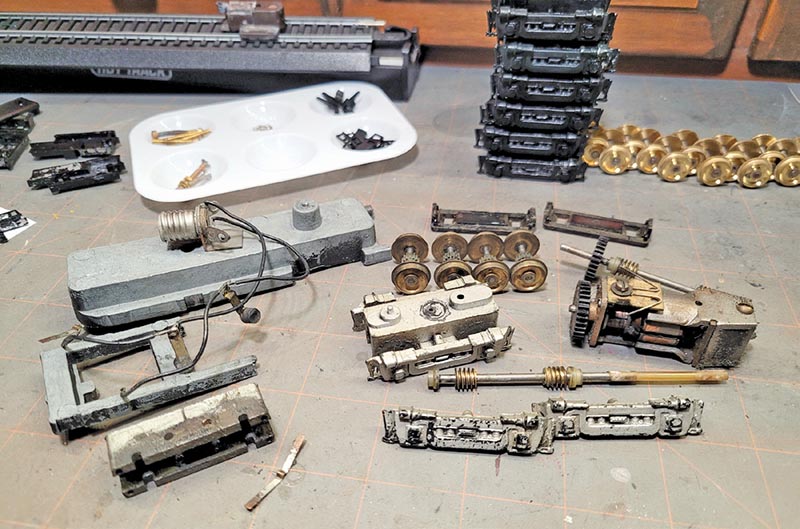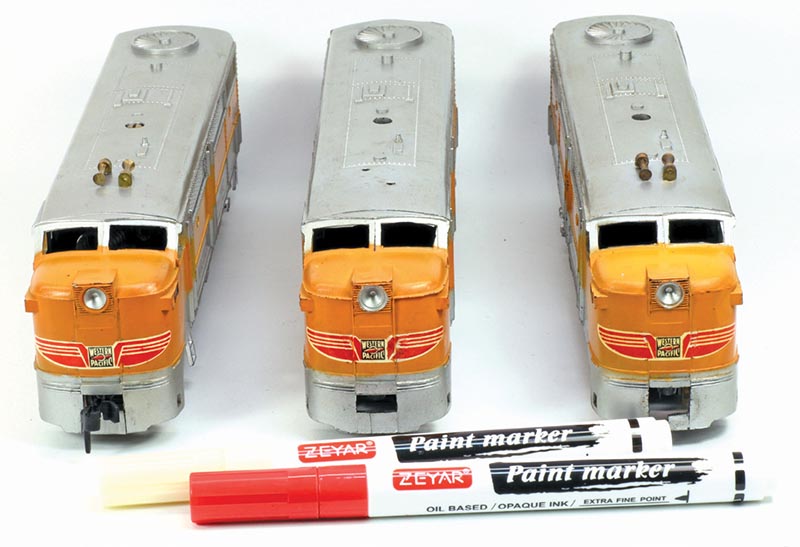 by Tony Lucio/photos by the author
by Tony Lucio/photos by the author
How do you approach repairing or restoring a model train? Just like modeling and collecting, there’s no one correct approach, even for the same individual person. Every situation is a unique combination, where a given model and an owner’s desired intent intersect somewhere within a minefield of possibilities.
Here are some familiar scenarios… You want one particular item but have to acquire others as part of a lot. What will you do with them? After acquiring an item you discover a flaw that thwarts your desire. What will you do? You have an item in lesser condition and want to improve it. But are you improving it to meet your standards and keep it, or fit someone else’s standards and sell it? You acquire an item in better condition than one you already own, but still not ideal. Do you try to combine them, or keep looking and spending for better? You acquired an item for parts. Now what?
While familiar, each scenario is imbued with dozens of variables even before the subjective condition of the items involved is considered. When condition is weighed in, things become even less straightforward! What could be an objectively “best” approach for one situation could be infeasible or undesirable for another. A few factors that influence the decision process include: the availability of a model (keep in mind that scarcity can be relative), the “value” of a model (which varies from person to person), the owner’s available resources (skills, tools, parts), the owner’s motivation (use, display, keep, sell, experiment, learn), or intangible whims (we all have favorite “junk” and “blank check” items).

ABOVE: After the dummy parts emerged from the ultrasonic (note the shiny wheelsets and factory-style plain sideframe stack in the background), I dismantled the powered chassis down to component parts. Despite the broken frame and the motor’s missing pieces, it seemed fully salvageable.
This is all nothing new, but it’s worth reviewing because “condition” is arguably a mere subcomponent to the above, and tabulating all those variables in their relative weight is how a model may be coveted by one person as it is, or gleefully trashed by another. A model wholly unfixable by one person is quickly repaired by another. A flaw imperceptible to one person blares an inescapable klaxon to another. And so it goes: what you decide is worth fixing and what isn’t, and what resources to spend on the effort, depends entirely upon your frame of reference as judge against the item before you.
In this article, I’ll share an example case, which only reveals just one situational formula I’ve derived over the years. In early 2022, Tony Cook acquired a group of Hobbyline Western Pacific Alcos while preparing and collecting materials for Rick Tonet’s “Hobbyline: Morrisville’s Best-Kept Secret” that appeared in Second Quarter 2022’s HO Collector. Unfortunately, most of the group left, well, lots to be desired. He sent them to me for tinkering purposes in hopes that I “might get one decent one out of the bunch.”

ABOVE: Each of the shells above has touched-up nose decals, which I rendered using the paint markers shown — a large, yet inexpensive assortment yielded close color matches. The middle shell is the messiest, but its uniquely prone and oversized tooling seams around the nose greatly complicated my efforts. Such OEM defects can render a specimen less desirable among collectors but make good donors for practicing craft. I dare say my touch-ups are harder to discern on the units flanking it. Also note the styrene patch I made to fill the pilot on the left unit, which was formerly missing. The joint seams on my patch mimic Hobblyline’s original tooling.
Guiding my approach, I considered the fact that Hobbyline Alco FAs generally aren’t terribly rare or valuable, so I needn’t obsess over every last detail or conditional aspect. “Decent” is a relative term after all; for me as a “collector,” this generally means a model displays cleanly with whatever aspects (warts and all) typified its design and production. As a “modeler,” I might weigh other criteria seeking to improve production flaws. This can be a balancing act because not every “flaw” should always be fixed, especially if improvements are irreversible.
For fair disclosure, I’ve no personal attachment to Hobbyline as a subject of sentiment or interest, so my approach might have been more detached in this instance, than that of someone with more affection for or knowledge of the line. For the purposes of this article, I also decided to avoid spending additional money, if possible, and stick to using what I had, as found. After all, chasing a “better” Hobbyline FA diesel locomotive model or parts would be an entirely different exercise following different guiding philosophies and goals. Those could still be perfectly valid, but not the objective here, which is to see how I can make a single “decent” loco from a group of four that aren’t…



